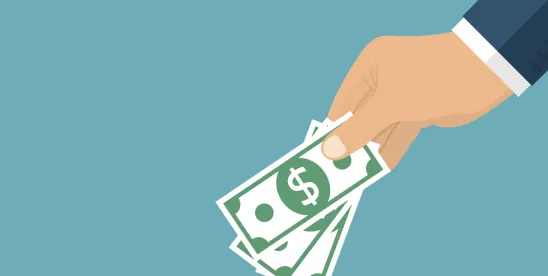Too often sequels disappoint.
Consider these bombs - Caddyshack II, Jaws – The Revenge, Mall Cop 2, Major League II, and I could go on. But every once in a while a movie sequel hits a home run – Goldfinger, The Good, The Bad and The Ugly, and The Godfather, Part II come to mind. So what will the critics (myself included) have to say about the sequel to the not so little darling of the United States' pandemic economy, the Paycheck Protection Program? Really, it is too early to tell, as the SBA has yet to issue rules or guidance to fill in the many gaps left by H.R. 133, The Consolidated Appropriations Act, 2021. But, as we await additional guidance from the SBA, which should be issued any day now, let's analyze what we know to date and see if and how this sequel may help many of our small and mid-sized businesses.
A Quick Overview
Last week my law partner, Tom Zamadics, wrote an excellent overview of the new Paycheck Protection Program ("PPP") provisions, one day after the bill was signed into law. This article will take a slightly deeper dive into the nuances of two aspects of PPP, Episode Two; the ability for a business to receive a second PPP loan and the availability of additional funds for businesses who obtained a first-round loan, but returned the funds – otherwise known as the Phoenix of the PPP program.
Second Round of PPP Funding
One very significant development in H.R. 133 is the allocation of an additional $284 billion (roughly) of funds for PPP loans, including second draw loans. While the general concepts surrounding these loans remains largely the same, there are a number of changes from the original, some clearly designed to benefit small business, including a special benefit for certain types of businesses.
Loan Amount
A business may qualify for a second loan of as much as 2.5 times the average monthly payroll costs in the one-year period before the date the loan is made or in the calendar year 2019, up to a maximum loan of $2 million. Presumably recognizing the dreadful impact the pandemic has had on the lodging and food service industries, these businesses may apply for a loan of up to 3.5 times the average monthly payroll, while the maximum loan amount remains at $2 million. The $2 million loan cap is new and appears to be in response to previously expressed concerns, both from Congress and the public, about businesses who received initial PPP loans well in excess of $2 million.
Other Eligibility Requirements
Congress included several new or revised eligibility requirements for "Second Round" applicants. The revenue reduction test is a critical new addition to the PPP loan eligibility requirements. A business must demonstrate that it has experienced at least a 25% reduction in gross revenues between comparable quarters in 2019 and 2020. There are other timelines for businesses that were not in operation in Q1, Q2, and Q3, and Q4 of 2019. Applications submitted on or after January 1, 2021, are eligible to utilize the gross receipts from the fourth quarter of 2020 relative to Q4 2019. It is unclear whether this revenue reduction test will replace or merely supplement the CARES Act’s subjective necessity certification. This question may be answered with SBA guidance, but the subjective certification seems somewhat meaningless if a small business has seen a 25% reduction of gross revenue during the same quarter in 2019 versus 2020.
If you are a business owner fortunate enough to have experienced a flat or increased gross revenue in 2020 compared to 2019, do not assume that your business is not eligible for a second round PPP loan. The applicant's ability to select which 2019/2020 quarter it will use in determining whether they meet the year over year gross revenue reduction requirement may save the day. What if your business was forced to shutter its doors or otherwise experienced a substantial slowdown for a period of several weeks or months during 2020, perhaps due to a COVID outbreak within its workforce? Even though you have an annual year over year gross revenue that is neutral or slightly down, your business might meet the 25% reduction requirement for a single quarter and may be eligible to apply for a second PPP loan.
Another eligibility change is to the maximum number of employees. H.R. 133 provides that the business must have no more than 300 employees, although a business in the lodging or food service industries with multiple locations must have no more than 300 employees at any single location. This is down from the 500 employee limitation under the CARES Act and subsequent guidance.
Finally, please remember that you must use or will use the full amount of your first PPP loan in order to be eligible to apply for the second draw.
The Phoenix
During the early days of the CARES Act, and for several months thereafter, we counseled many businesses regarding the risk associated with obtaining and retaining a PPP loan. After all, unless the business was relatively confident that it would receive complete or nearly complete loan forgiveness, it is just a loan; one with a nice interest rate, but otherwise horrible repayment terms.
Anyone with interest in the PPP loan program is familiar with large, publicly traded companies who, in the early days of the program, received and then quickly returned their PPP loans. What about the multitude of small business owners who, afraid of the repayment terms or how SBA may interpret the subjective necessity certification, took the same step, and returned their loan? I have not seen details on the number of businesses returning loans, but I read that more than $30 billion in funds had been returned, only a fraction of this amount was from publicly traded companies.
For many businesses, the return of the PPP loan was and remains a sound business decision. For others, the additional rules and guidance issued by the SBA came too late; they had taken the safe route and returned their PPP loan funds. I expect many of these businesses closed and never will reopen. Others continue to struggle financially.
For those still in business, H.R. 133 provides a second chance at a PPP loan. Specifically, the law directs SBA to release guidance within 17 days of enactment that allows borrowers who returned all or part of their PPP loan to reapply for the maximum amount applicable so long that they have not received forgiveness.
While we have to wait to see what the guidance will provide, but this is a unique opportunity for many small businesses. Those in this position should continue to monitor the SBA guidance and keep in touch with their lenders and legal counsel.
Conclusion
While many aspects of Episode Two of the PPP loan program remains a bit murky, the framework is in place for additional financial relief and assistance, especially for small and mid-sized businesses. Stay tuned for further plot developments.




 />i
/>i

